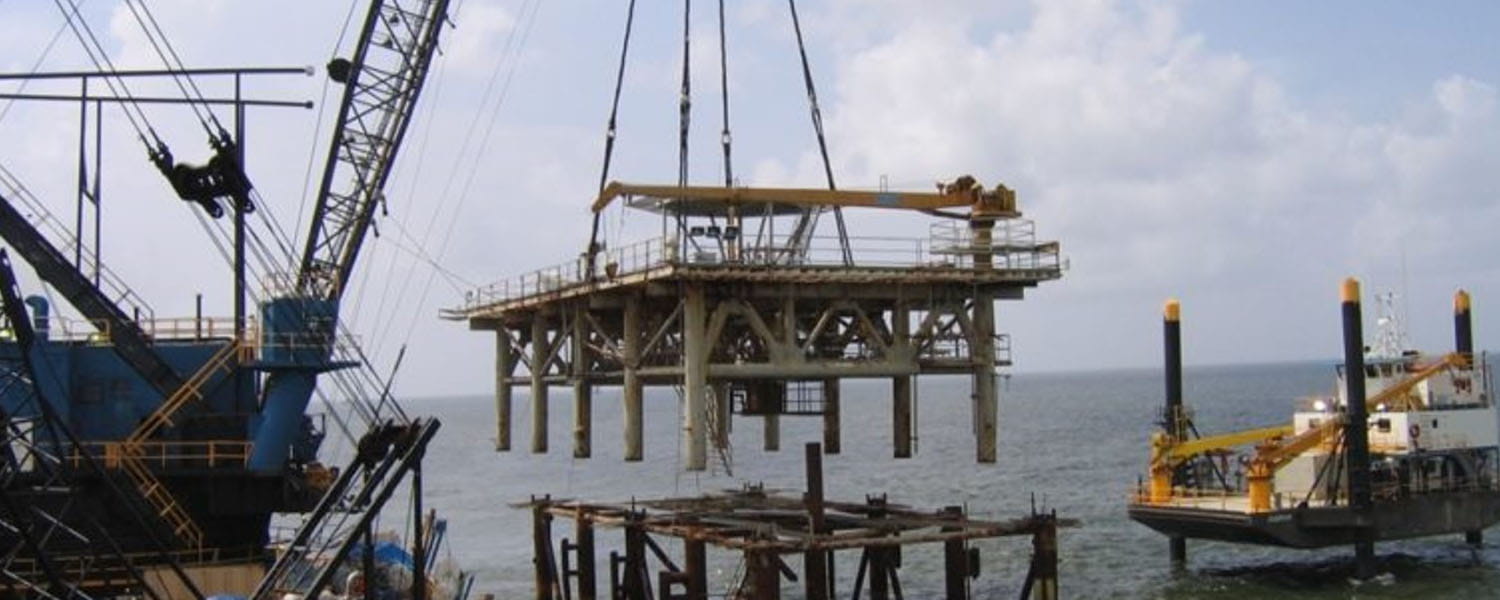Some may ask, “Why allow for decommissioning in the initial design if we won’t be decommissioning for another twenty years,” concluding that the challenge will be forgotten as the years pass. This is a very short-sighted mindset that does not consider the life of field costs.
Decommissioning costs are built into the project from the start. All project economics include an estimate of the decommissioning costs in the Net Present Value (NPV) of the project. Company balance sheets include the liabilities of decommissioning from the start up as a non-current liability. So, if the decommission cost estimate can be lowered during the design phase, the project economics improve, and the company’s liabilities decrease. To demonstrate this benefit, we calculated the NPV of the Clyde field (60,000 barrels of oil per day in 80m water depth central North Sea) with different decommissioning cost estimates. Our economic analysis showed that for the Clyde field, the NPV would increase by 10% if the decommissioning cost estimate could be reduced by half. A structural engineer would have had to reduce the 17,000 tonne steel weight of the jacket by 8,000 tonnes to get the same benefit to the NPV.
The solution
How can we embed decommissioning thinking into a new project? Decommissioning engineers try to do this by auditing completed designs for decommissioning suitability during the detailed engineering stage. But this equates to a waste of time since the change control procedure refuses to accept changes in detailed design unless they are safety related. Comprehensive manuals on decommissioning have been written, but few to no design team members read them. So, a group of frustrated engineers with representatives from more than 20 companies decided to do something about it.
By using the Advisian DELTΔ™ Tool, we calculated the NPV using Clyde and two other fields economic parameters. The results showed benefits to the Net Present Value of the projects provided the field life was less than twenty-five years. Next, we gathered data on the necessary design changes to reduce decommissioning costs, starting with Subsea facilities, as that was where the expertise lay. In a matter of time, we revealed 81 lessons with a potential cost saving of tens of millions of pounds. For ease of use, each of them was graded as having high, medium, or low impact on the decommissioning cost. The result of our work is shown below:
After a brainstorming exercise, we landed on the idea of transferring the information into the form of a checklist for each group of engineers. Our vision is to have a single sheet of paper for the Lead Discipline to verify if the design incorporated the lessons. Then a design review will use the same checklist to discuss whether the optimum design has been achieved, allowing for the issues of the field.
The final step was to find a home for the database that would be free and accessible to all, and housed in a neutral space, with no single company from the group possessing a commercial advantage by retaining the database on its website. It also had to be easy for an engineer to add to the database or to comment on the lessons. The Society of Petroleum Engineers offered to host the data on their Petrowiki site. With free access to members and non-members alike, we have had over 1,450 hits every month for the past six months on the ‘Design for Decommissioning’ site.
Our vision for the future
Our vision is that Design for Decommissioning will be part of every project and that:
-
Decommissioning engineers contribute to the design process during FEED and Concept Select so that decommissioning ideas are in the Project Basis for Design.
-
Half-day workshops are held during the design review to assess the friendliness of the design for decommissioning, and to reduce the decommissioning cost estimate for project economics.
-
Checklists for design engineers for each subsea and topsides discipline are utilised to achieve standardized best practices in design and optimisation.
-
Database of Lesson Learnt for topsides and jackets will be accessed through an APP and are easy to use and continuously improved.





